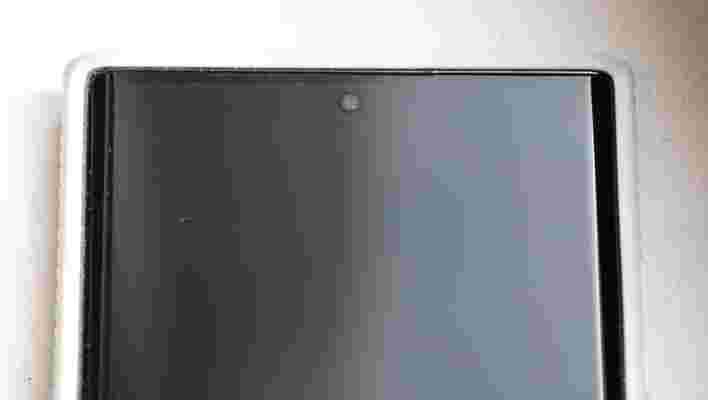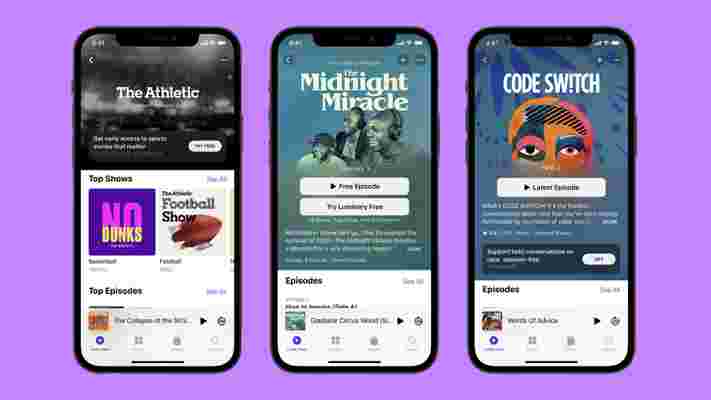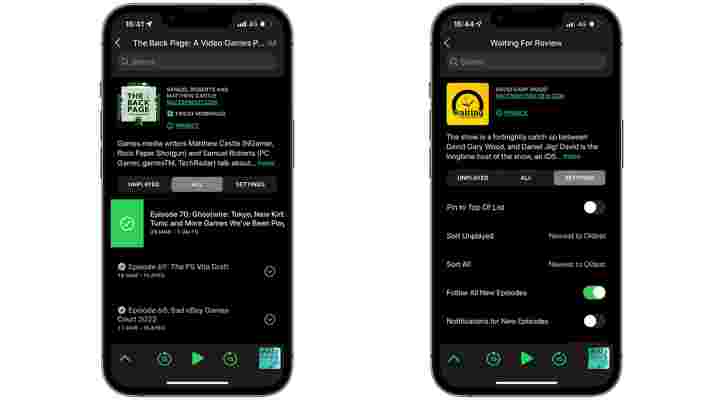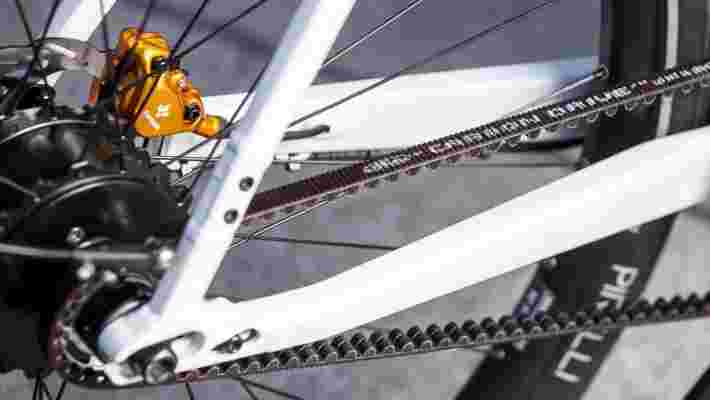It started when I felt a tiny ridge – an imperfection – on the Samsung Galaxy S22 Ultra's perfect plane of glistening Gorilla Glass.
My finger caught on something I couldn't see. I absentmindedly ran my finger back and forth over the screen, which was currently displaying my Twitter feed. Did I feel something? Nao, waihere is it.
I stopped reading angry tweets and started examining the screen as my mind flashed back to two days prior.
Standing in my kitchen, I fumbled with the 6.8-inch Android 12 smartphone (which I'd been using frequently, especially for its stellar photography chops), it slipped from my grasp and clattered to the tile floor just one meter below.
"What was that? Was that your phone?" my wife called from the other room.
I quickly snatched the prone device from the floor. It's nestled in a rubber Samsung case, so I wasn't too worried. I looked it over, noticed no breaks, and yelled back, "Yes. It's fine."
"Why do only my phones shatter?" asked my wife.

First, I don't drop phones. In nearly 20 years of testing them, I've never broken a review unit. I did once drop a 12.9-inch iPad Pro on a glass table, shattering the screen, but that was an arguably unwieldy tablet. I don't drop phoner rather, I didn't.
Now, on the train, running my finger over what I realized was a crack, I understood what I'd done.
Looking closer, I could see a fine fissure snaking from the top of the phone, just above and to the right of the selfie camera, nearly two-thirds of the way down the face of the display to the right edge.
When the phone is on, you can barely notice it unless a letter falls right under the crack and is split into two slightly displaced halves.
This should not have happened.
With the Samsung Galaxy S22 Ultra, Samsung built a brick of a phone off the original Galaxy Note design base. It's a large, solid, rigid, but not unpleasant to hold, 229-gram device that, from the look of it, should be up for a drop or two.
The phone is wrapped in Gorilla Glass Victus+ (which is rated by Corning to handle drops of up to 2 meters). It covers that back and my now damaged 6.8-inch AMOLED screen. Plus, I had it in a case.
You might wonder why I didn't arrive at this conclusion when I reviewed the Samsung Galaxy S22 Ultra. The fact is that I don't do drop tests with review units, devices temporarily handed to me by manufacturers that they have every expectation will be returned in reasonably pristine condition.
I'm happy to dip them in water, but not drop them on concrete knowing that, even if they don't break, they'll get some unsightly scuffs. I don't think it's a good idea to do that with equipment you don't own.
Also, my review process reflects how I would use these products if I owned them. I generally don't drop technology (or really anything).
Still, here I am, confronted with the result of an unplanned drop test and the results aren't good.
A three-foot (or 1 meter) drop of the cased smartphone shouldn't have resulted in this crack. However, I understand that with any glass-screened device, all you need to do is find the optimal stress point and where the physics are just right to fracture even the toughest screen.

At least this is a clean crack and not a shatter – you know, the ones that make the screen unusable and even dangerous to touch (those tiny glass shards). This is a break that, while substantial, you really have to look closely to see it or turn off the screen, which seems to highlight it more.
It's also worth noting that the screen crack in no way affects the performance of the Samsung Galaxy S22 Ultra. It's just as fast and fun to use as ever – until my digit skips over that fine, sharp edge. That break also means that the device is no longer sealed against the elements. I wouldn't confidently drop it in a bucket of water or even use it out in the rain for too long.
I'm disappointed in myself for my clumsiness and, a bit, in the Galaxy S22 Ultra for not being equal to such a short fall.
It's not a great look for this Samsung Galaxy S22 Ultra, but I caution against assuming that all S22 Ultras are prone to fragility. My guess is that the fall caught the top edge of the phone and that a screen-first fall might've had a different result.
On the other hand, get a case on your Samsung Galaxy S22 Ultra and hold onto it – tight.
The best podcast app on iOS gets a major redesign, leaving Apple's app in the dust
The popular podcast app Overcast has been updated for iOS , bringing the first steps of a redesign to the home screen, alongside custom playlists, choices for different playback colors, ways to filter podcasts in three ways, and more.
Created by developer, writer, and podcaster Marco Arment , it's been the go-to podcast app for many who haven't been entirely happy with Apple's Podcast app. While Apple recently added some updates to help users manage their subscribed shows, Overcast has other features that make it a great alternative.
Called 2022.2 for this latest update , it lets you pin podcasts to the home screen and mark podcasts as played, which can save you from wasting cellular data downloading episodes you've already listened to.
With Overcast's significant update, we're wondering what Apple's own Podcasts app must do to stay competitive.
Analysis: Apple's Podcast app has always felt like a catch up

Podcasts have always felt as though they've been around as long as we've been able to send emails to one another. While they first appeared as a new medium in the early 2000s, podcasts arrived on Apple's platform in 2005 with iTunes 4.9. It was a way of subscribing to shows on Windows and macOS machines back then, which we would then connect our iPods to sync up our favorite podcasts.
That year, Steve Jobs, Apple's co-founder and then CEO, gave an impromptu demo of the feature at one of The Wall Street Journal's early All Things D conferences.
Once the iPhone arrived in 2007, podcasts would be part of the original Music app, but at the time, it was still a challenge to subscribe and download new podcast shows.
Finally, a dedicated app arrived in 2012 from Apple, and while there have been regular updates to it, alongside a macOS version that debuted in 2019, it's still playing catch up in features, especially when you compare it to Overcast.
Arment's app has long had an innovative feature called smart speed, where the app identifies silent pauses and speeds the episode up at those points. Once the host or guests speaks again, the playback speed returns to normal.

Having used the Overcast 2022.2 update on an iPhone 13 Pro , being able to pin podcasts, and, at last, change the colors of the controls, it's clear Apple has its work cut out for it.
Apple has introduced subscriptions and the ability to track listens for podcast creators to its own app, but the app still feels as though it's playing catchup.
Apple's take of a podcast app has the basics covered, but you can't pin shows, there's no smart speed, and links in show notes still don't show correctly. There's no hook from Apple here to tempt you to use its app - everything looks and feels run of the mill, a podcast app that does the basics, and that's it.
There's no killer feature like smart speed to tempt you away from Overcast, and in a way, that's only good news for Arment's alternative, especially in the last decade of Apple's Podcast app being available to download.
To catch up, Apple could buy Overcast - it won't - or shift how it updates the app and move from annual major updates to a once-every-few-months cadence. In this way, Apple's Podcasts app could build on what listeners and podcasters want.
For now, though, this is all wishful thinking. Overcast has been updated with a great redesign, and there are further plans to look into redesigning the Now Playing screen. While you can download Overcast for free, there is a yearly fee of $9.99 / £8.99 / AU$ 10.99 to get rid of ads and use a dark-themed icon. Apple's Podcast app is free.
With this substantial 2022.2 update, we can confidently say that it's worth the price if you're a heavy podcast listener.
This stealthy e-bike will give you a secret boost without anyone knowing
If you like the idea of riding an e-bike , but don't want to admit you're getting a little motorized help, German bike builder Rose has the solution: a single-speed electric bike with a drive system so well hidden, you'll have to be really looking hard to spot it.
As BikeRumor reports, the delightfully named Rose Sneak+ looks almost exactly like a regular single-speed, with the exception of a tiny power button on the top tube and super discrete rear hub motor. The battery is hidden completely – fully integrated into a downtube that looks no thicker than a conventional one.
Sneaky e-bikes aren't a complete novelty; in fact, race organizers at events like the Tour de France use methods like thermal imaging cameras to detect signs of 'mechanical doping' (ie using a motor). Even though it'll add precious grams to the weight of a racing bike, a tiny hidden battery pack can give unscrupulous riders a secret hidden advantage on tough stages.

Out in the real world, e-bikes generally seem to be splitting into two camps. Some wear their batteries with pride, sporting minimalist branding, built-in lights and ride computers, and noticeably thicker frames (the Cowboy 4 and WAU Bike are good examples).
Then there are 'stealthy' e-bikes like the Ribble GCR AL e and Ampler Curt that could quite easily pass as purely pedal-powered at a glance. Few consumer bike builders are taking things quite as far as Rose, though.
Sneakily does it
The Sneak+ doesn't weigh as much as a typical e-bike, either. Tipping the scales at a mere 14.5kg, it's almost as light as the Ribble Hybrid AL e . Perhaps most surprisingly of all, Rose has managed all of this without sacrificing range. The Sneak+ is packing a 250Wh battery, and can run for up to 62 miles between charges, which is very respectable.
It's designed for use in the EU, so it won't exceed 12.5pmph with the motor engaged, and the power will only kick in when you're pedalling yourself, but that just adds to the illusion that you're doing all the work yourself. If anyone asks, you can put it down to a new training plan.
The Rose Sneak+ starts at €2,350 (about $2,600 / £2,000 / AU$3,500), or you can upgrade to a version with a Gates carbon belt drive for €2,600 (about $2,900 / £2,200 / AU$3,800).